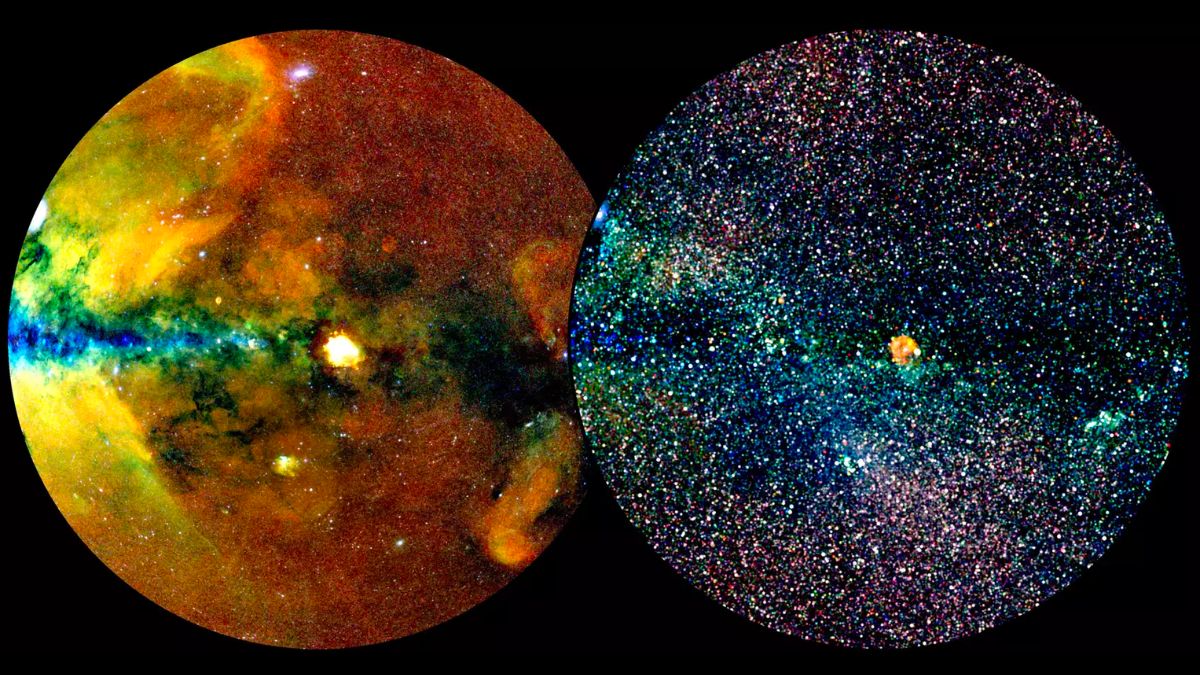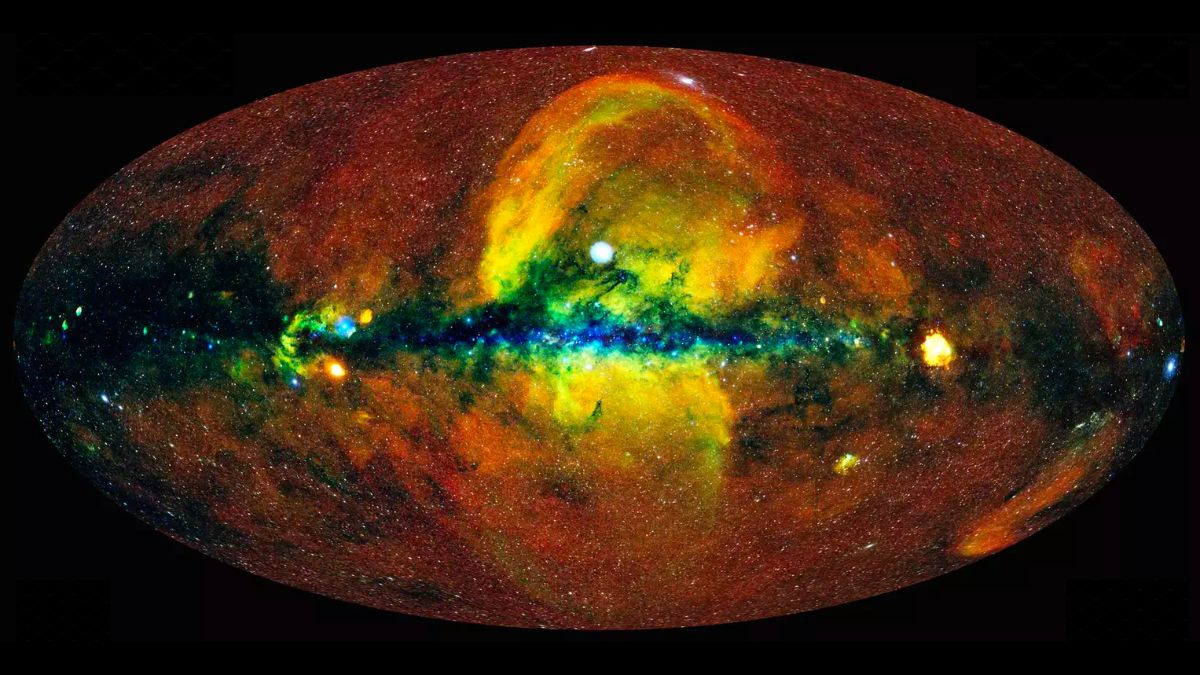Scientists have released a plethora of data gathered by the eROSITA X-ray telescope, revealing over 900,000 heavenly objects, including 700,000 supermassive black holes and other strange things, offering important new insights into the secrets of space.
Table of Contents
The most thorough and comprehensive X-ray image of the universe has been created by astronomers, providing an amazing window into the secrets of space.
eROSITA X-ray Telescope Data
The data exposes an incredible diversity of cosmic phenomena, including over 700,000 supermassive black holes, a large, unexplained bridge of gas joining far-flung galaxies, and hundreds of thousands of other extraordinary deep-space structures.
The eROSITA All-Sky Survey, which used the eROSITA X-ray telescope to scan the entire sky from December 2019 to June 2020, produced the most recent release of X-ray data.
Around 170 million X-ray photons were found in the sky during this time, and astronomers later determined that these were about 900,000 distinct objects in space, the majority of which were supermassive black holes, according to the Max Planck Society in Germany, which helped to oversee the mission.
“eROSITA has made X-ray astronomy discoveries that are nothing short of astounding,” stated Andrea Merloni, chief investigator and primary author of the mission.
Merloni emphasized the mission’s remarkable capabilities by saying, “In just six months, we’ve identified more sources than XMM-Newton and Chandra have found in their combined 25 years of operation.”
Data of the eROSITA X-ray Telescope in Table Format
| Aspect | Details |
| Telescope Name | eROSITA X-ray Telescope |
| Released Data | 70,000 supermassive blackholes and over 900,000 stars |
| Significance | Provide valuable data of mysterious space |
| Survey Name | eROSITA All Sky Survey |
| Survey Period | From December 2019 to June 2020 |
| Duration of Mission | 6 months |
| Detection of Photon | Over 170 million X-ray photons |
| Mission Management | Max Planck Society in Germany |
| Objects Identified | Over more than 900,000 stars, galaxies. |
High energy electromagnetic radiation that is invisible to the human eye is known as X-ray radiation.
The vast majority of X-ray emissions in space come from concentrated areas of extremely hot gas. These can be found in massive galaxy clusters, the remnants of supernova explosions, like the famous Crab Nebula, or active black holes, which can outshine entire galaxies due to the rapid and intense gravitational attraction they attract.
Analyzing cosmic X-rays can assist detect big, high-energy objects like these and provide insights into the universe’s overall structure.
The discovery of a gigantic “filament,” or connection, of hot gas spanning over 42 million light-years—more than 400 times longer than the Milky Way—between two galaxy clusters is an intriguing finding from the study.

This filament is believed to be a part of the cosmic web, a massive network of gas that supplies all galaxies in the universe and uncovers the empty regions where enigmatic dark matter is believed to exist. (Note that the research is still undergoing review by subject-matter experts.)
In addition to publishing the most recent data set, the project’s scientists have written more than 50 articles for scholarly journals that explore a subset of eROSITA’s novel findings.
According to the researchers, the current collection of over 200 papers that have been published on eROSITA’s earlier findings is supplemented by this recent explosion of astronomical literature.
The group has made the entire dataset available on the eROSITA website, along with free tools for viewing it. In the near future, further information and research articles are planned.
Meanwhile, eROSITA will carry on with its star observations from its location on the SRG space observatory, which is a joint German-Russian initiative.
